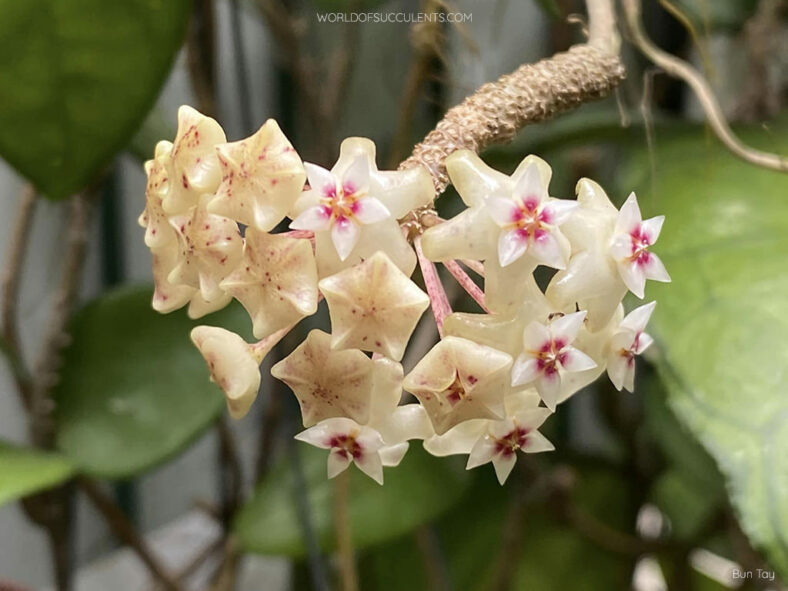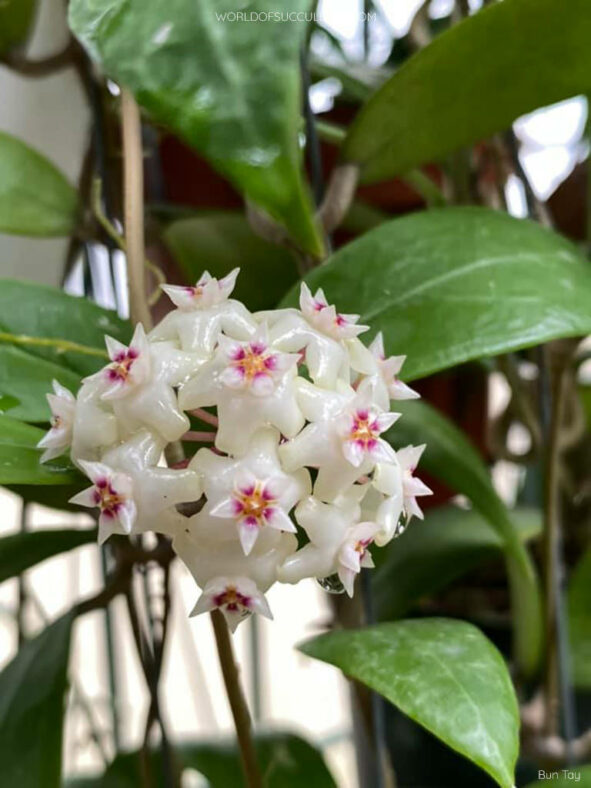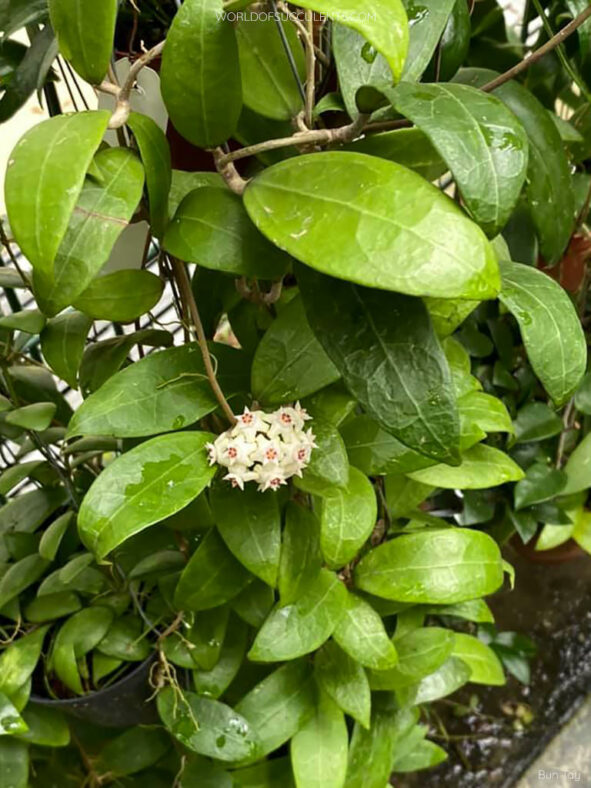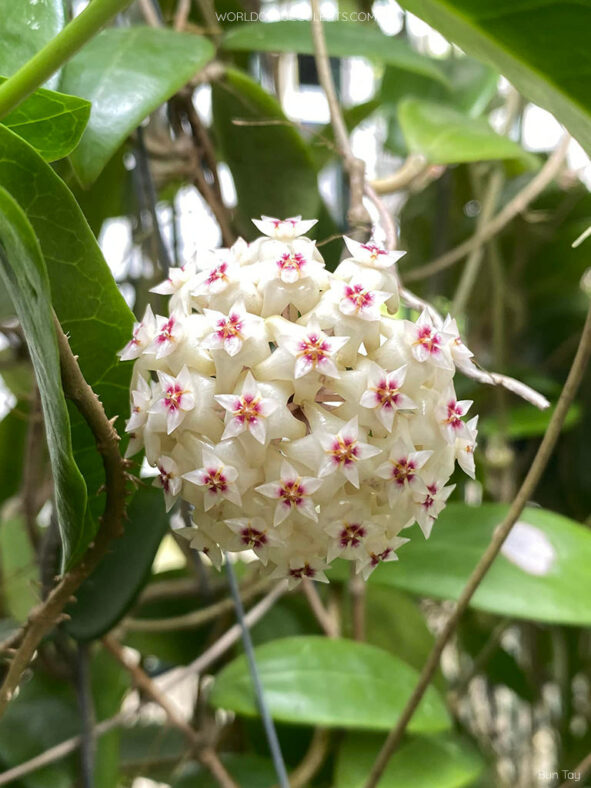Scientific Name
Hoya bhutanica Grierson & D.G.Long
Scientific Classification
Family: Apocynaceae
Subfamily: Asclepiadoideae
Tribe: Marsdenieae
Genus: Hoya
Etymology
The specific epithet "bhutanica (pronounced bu-TAN-ee-kuh) means "belonging to or derived from Bhutan" and refers to Bhutan, officially the Kingdom of Bhutan, from where this species originates.
Origin
Hoya bhutanica is native to Bhutan. It grows as an epiphyte in dense forests at an elevation of about 1,480 feet (450 m).
Description
Hoya bhutanica is an extensive creeper with slender stems that bear fleshy, green leaves with visible veins. The stems can grow up to 16.4 feet (5 m) long. The leaves are elliptical with a pointed tip and can measure up to 6 inches (15 cm) long and up to 1.8 inches (4.5 cm) broad. They are attached to the stem by a thick petiole up to 0.3 inches (0.8 cm) long.
During spring and summer, Hoya bhutanica produces dense clusters of beautiful white flowers with a purple center. The flowers are star-shaped, highly fragrant, and can reach a diameter of 0.8 inches (2 cm). However, they only last about four days.

How to Grow and Care for Hoya bhutanica
Light: Hoya bhutanica thrives indoors in bright, indirect light. It can tolerate pretty low light levels, although it becomes weak and leggy, produces fewer leaves, and may not flower.
Soil: To ensure optimal growth, plant it in well-draining soil that provides excellent aeration and does not hold too much water.
Temperature: As a tropical plant, Hoya bhutanica thrives in hot and humid climates. During the colder months, it should be kept away from drafty windows and doorways. This plant can withstand temperatures as low as 40 °F (4.4 °C). USDA Plant Hardiness Zones 11a to 11b, 40 to 50 °F (4.4 to 10 °C).
Watering: Water the plant regularly in spring and summer. Soak the soil thoroughly until the water drains out of the drainage holes, then let the soil dry out between waterings. The plant is relatively dormant in fall and winter and needs only moderate watering.
Fertilizing: Hoya bhutanica is not a particularly heavy feeder but can appreciate some extra nutrients. Therefore, feed with high-potassium fertilizer at half strength every two weeks during the growing season.
Repotting: As an epiphyte, this plant has quite shallow root systems and does not require a deep container, nor does it need to be repotted frequently. It prefers growing a bit tight in its container, so repot in spring only if it outgrows its container.
Propagation: You can easily get new plants from one you have by stem cuttings. Leaf cuttings can be more challenging. Layering is the easiest propagation method, while starting from seeds is the simplest but the most time-consuming. For best results, take cuttings when the plant is actively growing and sow the seeds in well-draining soil in spring and summer.
Learn more at How to Grow and Care for Hoya.
Toxicity of Hoya bhutanica
Hoya bhutanica is non-toxic to humans and pets.
Links
- Back to genus Hoya
- Succupedia: Browse succulents by Scientific Name, Common Name, Genus, Family, USDA Hardiness Zone, Origin, or cacti by Genus
Photo Gallery
Click on a photo to see a larger version.


